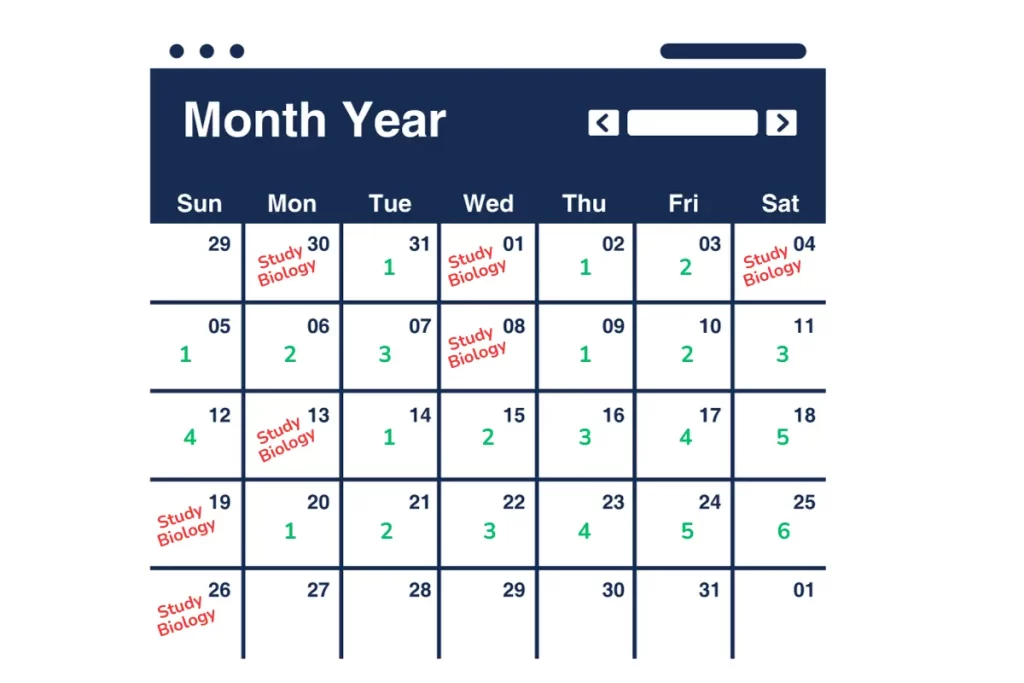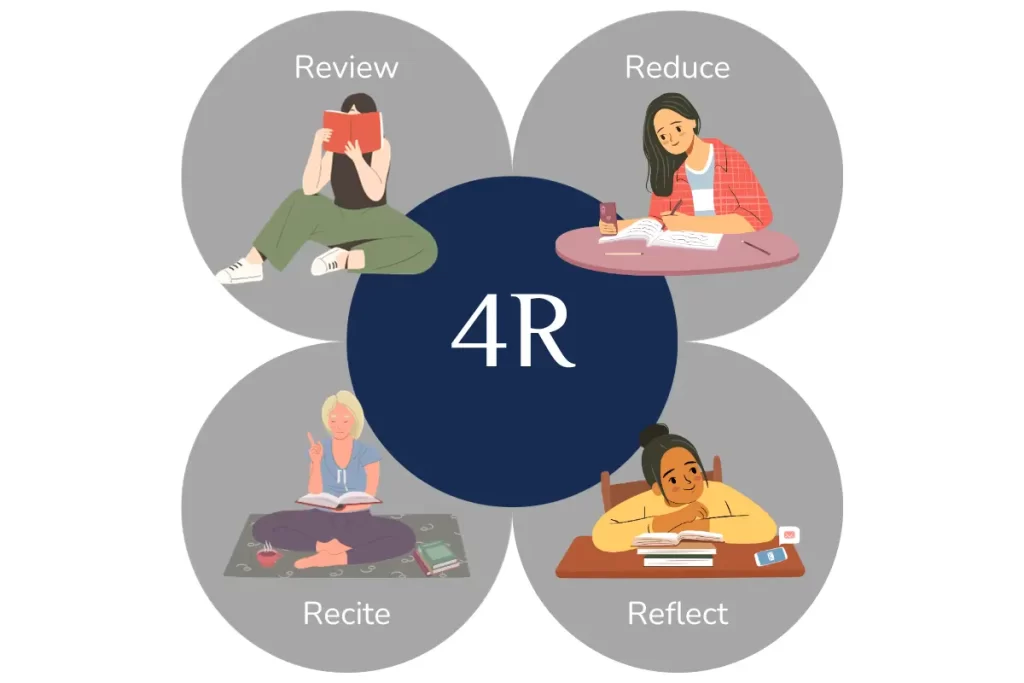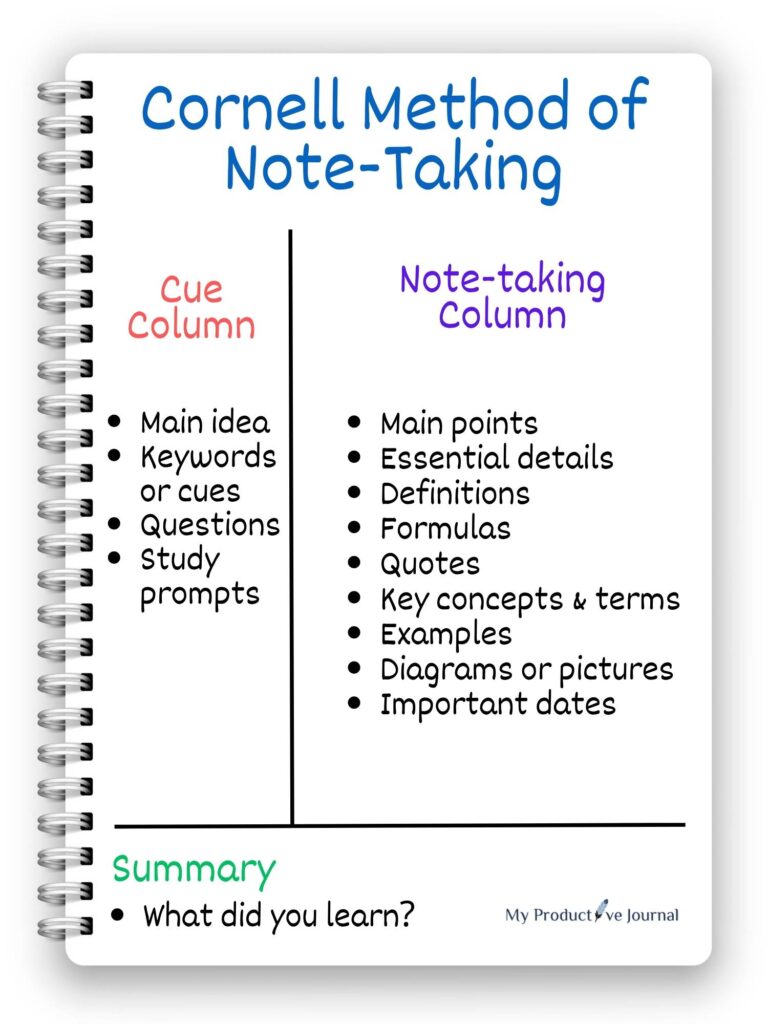Do you ever find yourself looking for the best learning methods? Or are you struggling with how to prestudy? Well, you’re in the right place!

In this article, I’ll give you 7 secret methods for studying that you can choose from. If you stay with me till the end, I have a bonus tip for you.
Anyway, I think that the best method to learn any subject will greatly affect how you gain information. Like you, I experienced studying difficult materials.
That’s why I wanna share these techniques so you’ll know how you can improve your studying experience.
So, what are the best ways to study? Keep reading to find out.
Table of Contents
The 7 Secret Methods for Studying
Teach to Learn Method
The Teach to Learn method or the protégé effect, makes you the teacher of the topic or lesson that you want to learn. And you may find it fun to do. Simply because you’re gonna learn and prepare what you’ll teach about.
Let me show you some examples.
Let’s say your teacher picked you to teach a lesson. And because of that, you’ll need to prepare for it and practice how to deliver it for the class.
Or, you and your classmates form a group, and one of you teaches the topic while staying in a cafe.
Another way this works is when you tutor the material, one-on-one, with another classmate.
As a result, you’ll be able to remember the details of that lesson. You also become more actively aware of your learning process and become organized in your study materials.
You’ll also feel motivated to learn more as you study the topic together with your friends and peers.
You can apply this method in other areas of your life, too. Like, you can teach others how to cook a recipe as you learn about it.
Nevertheless, you will definitely get a better grasp about the material as if you’re teaching it.
Chunking Technique
Chunking is a technique that brings the best in our short-term memory. It works by breaking down the information into smaller groups, or ‘chunks’.
By applying this method, you lessen the mental stress of memorizing and taking in large amounts of data at one time. Pretty cool, right?
Aside from that, this helps the brain to take in the information if done consistently. Which means, you learn little by little.
To break down the information, you need to:
- List the entire set of information or lesson/s
- Identify patterns and similarities
- Organize based on patterns
- Categorize in manageable chunks
Let me give you an example:
Say you want to learn about all the countries of the world. You list them together, and then organize them by categories. In this case, you’re gonna group them by their continents. And by each continent, you can easily memorize them.
But when it comes to more complicated material, like medicine or law, it’s a very helpful aid in memorizing simpler concepts.
Since it relies on short-term memory retention, keeping notes will be very crucial, especially if you’re chunking important topics.
Pomodoro Technique
The Pomodoro technique is one of the best ways to study for those who have a short attention span.
An Italian programmer named Francesco Cirillo coined and developed this method. He named it as inspired by his tomato-shaped kitchen timer.
This method works well if you have few distractions during the day, can work beyond your peak times, have lots of open work to do (like studying for exams or researching stuff), and if you’re very optimistic about finishing the task.
Many students and employees admire and do this method because it’s so simple and straightforward.
Here’s how it works:
- Provide yourself with a to-do list and a timer.
- Accomplish a single task for 25 minutes straight until the timer ends.
- Mark the task you accomplished and count one ‘pomodoro’.
- Enjoy a 5-minute break in the meantime.
- Repeat step 2.
- Everytime you reach 4 pomodoros, take a 15-20 minute break.
Remember, if you’re gonna finish a bigger task that’s longer than four pomodoros, break it down into smaller tasks. This helps you to be productive little by little, if needed be.
You can also mark off any other tasks that can be done in a single session.
If you are using this for studying, remember to be mindful of the timer. Take a break after the timer rings.
There is a core rule that Cirillo mentioned: never go beyond your 25-minute session. By that principle, you should be disciplined and consistent in this method.
Whenever any distraction comes up, you can take a 5-minute break, and take note of it so you can counteract when it comes up again.
Active Recall Method
The active recall method improves the retaining, understanding, and memorizing of information you learn. In this technique, you’re gonna be repeating the same info using flashcards or hand-size notes.
You can apply this method if you are gonna study a very difficult lesson. And when any test comes up, you’ll feel ready and confident to answer.
Not only that, but this technique can improve your overall cognitive performance and long-term retention of information.
This is why you won’t easily forget what you’ve memorized over and over again. The brain itself enjoys the active recalling of information being stored repeatedly. It also further improves the retention the more you recall the info.
Let’s look at an example:
During a lecture, you’re taking down notes. And after class, you take a blank card, and write just the lesson’s key points, but as simple and short as possible. And you also list terms that you need to remember.
That’s why, you would need to use flashcards, hand notes, visual aids and practice tests to better retain your learning on a long-term basis.
Spaced Repetition Strategy

The spaced repetition strategy is a method that repeats the review of study material over different intervals of time.
Wait, isn’t this the same as the active recall method? Not really, but let me explain. In active recall, you’re repeating the same amount of info at a regular interval.
But in this method, you’re consistently increasing the interval from days to weeks, or even months in between your next repetition
Using this method to study a new lesson or material enhances your ability to remember any information. The way this works lies in consistent intervals.
To do this, you need a single session of immersive study and space it out either a day after or a week or two in between.
Other learners recommend extending the time between intervals to also improve cognitive performance.
For example, after you studied a lesson, give a space of 1 day to review the material again. After that, place another interval of 2 days, and so on.
By lengthening the gaps in between, you will have enough time to study and review other lessons.
Mind Mapping Technique
If you’re a visual learner, the mind mapping technique might be for you. Basically, you’ll be sketching your lesson’s main topic, and connect with other concepts around it.
It’s all about relevance. You will connect all the lessons you’ve learned in your study material, giving a structure to your learning experience.
Here’s an example:
Let’s say you’re studying biology, and you’re dealing with its different branches. At the center, you draw a diagram with “Biology” in the middle. And around it, you place the words “Zoology”, “Ecology”, and other terms.
Aside from that, you can help your brain to remember these key concepts when you draw them on a map. How? You get to recall key points easily and it’s easier to process them.
Not only does mind mapping organize key concepts and ideas, but it also engages your creativity. You’ll be able to be creative in relating different thoughts together and drawing and coloring them.
4 R Study Method

Perhaps the most common study strategy besides spaced repetition is the 4 R study method.
There are four main steps in this study method:
- Review your study notes by reading them aloud. Reading your materials as thoroughly as you can will help you retain them in your long-term memory. Once you feel confident that you have understood your material, move on with another one, and return to it later.
- Reduce your notes by taking only the key points and summarizing them. By repeating and reading them, you’re helping your brain to remember them more often. It also ensures that you won’t miss any gaps in your study.
- Recite your summarized notes aloud. As mentioned earlier, reading and reciting it aloud will help you keep in memory what you’ve learned and studied. Not only do you read it with your eyes, but you also hear what you’ve learned, thus it’s an immersive approach.
- Reflect and think about what you’ve learned. You can relate your personal experiences to what you’ve studied, and connect it with the field you’re working on. Ask yourself about the importance of what you learned and how you can apply it in your life.
If you’re an immersive learner or a well-organized performing student, this method will greatly benefit your way of studying. You can boost your confidence in any subject you want to learn as well.
The main purpose of this method is to train your brain through repetitive retention that’s less stressful and to be adaptive to any form of study material.
Bonus Tip: Cornell Note Taking Method

Aside from the best study methods we mentioned earlier, there’s just one more technique that I want to show you.
This is called the Cornell note-taking method. It’s both a study and a note-taking technique. Why is that? We’ll get to that in a bit.
It is a powerful studying tool and an efficient note-taking technique, to say the least.
Walter Pauk at Cornell University in the 1960s made this technique to help students in taking notes during lessons and lectures [1].
As a result, you can have an organized train of thought for both quick reviews and long studying sessions.
On your page, place two columns and a spacious row below them. The first, narrow column will be your cue column and the wider one for note-taking. The row will be your summary section.
Here’s how it works:
- Take note of everything you’re learning in the note-taking section. These may include the main points of the lecture, given illustrations, diagrams, quotes from your instructor, and important dates.
- Then, on the cue column, write down the more important parts from your notes section. These ‘cues’ will help you remember your notes and quickly recall any of their details. The main ideas that will prompt you to recall your lecture notes should come from this column.
- After you’ve written your notes in your note-taking column, write down your conclusions in the summary section. This will help your brain to interpret the information you’ve learned from your lecture and absorb it easily. It also acts as a quick reference for your notes.
This method presents an organized way of notetaking, and at the same time, a time-saving study system. Though linearly written, it still contains study aids for easy recall.
By recalling it through the cues you selected from the notes, and reading briefly the summary you made, this method makes recalling and reviewing a lot easier.
The 7 Secret Methods for Studying (FAQs)
What are the 7 study strategies?
Here are the seven of the best methods for studying your lessons:
• Teach to learn method
• Chunking technique
• Pomodoro technique
• Active recall method
• Spaced repetition strategy
• Mind mapping technique
• 4 R study method
How to study effectively at home?
You should have a separate space for studying. Find a quiet environment where you can calmly study. Focus on the goal of finishing the lessons that you need to cover. And, take short breaks in between to avoid stress and mental fatigue.
How to study more productively?
Set goals that you can achieve easily. If you plan to study a difficult course, take all the time you need. If you learn how to study effectively, you can excel in your grades and be stress-free in studying.
How to figure out what to study?
First, you need to reduce the amount of study materials you have. Ask your professor about the important materials. Then, you can then look for the core concepts in those materials. You can decide what to study by prioritizing the least learned concepts till you have covered all of the material.
Is writing the best way to study?
You can greatly benefit from writing as the best way to study. Aside from that, you can also blend other studying methods, like active recall, the 4Rs or spaced repetitions. You may also add some illustrations to help you with your written notes.
How to help someone study?
You can teach the material to your peers and boost their mental health, along with family support and active listening. You may suggest a group study with their friends or classmates. You can also help him/her gain motivation and perseverance through positive reinforcement.
What is the best place for someone to study?
The best place to study would be your own separate space. Whether you’re living in your parent’s home, or a dormitory, find a place where you can study calmly. It sets the mood in your mind to focus clearly on studying.
What to Do Next?
Studying can be a fun process when you do it with a plan or strategy.
The more organized and prepared you are, the less stressful it will be.
One size doesn’t fit all, so keep trying different studying techniques until you find the one that works best for you.
The best method for studying is the one that makes the most sense to you. Sometimes, you just have to sit down and give it a try.
So, what’s your favorite study method? How do you prepare for a test? Share it with us in the comments!
Hey! If you found this post useful, check out these productivity tips and tools too:
